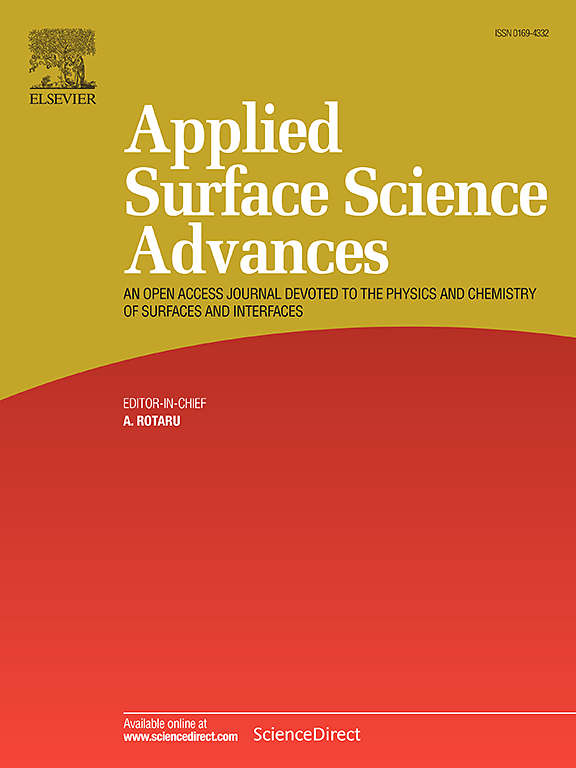Improved performance of lateral β-Ga2O3 Schottky barrier diodes by nitrogen thermal annealing
IF 8.7
Q1 CHEMISTRY, PHYSICAL
引用次数: 0
Abstract
We report the growth of β-Ga2O3 epilayers on sapphire substrates using metalorganic chemical vapor deposition (MOCVD) and the fabrication of lateral Schottky barrier diodes (SBDs). Ti/Al/Ni/Au layers with respective thicknesses of 20/300/40/50 nm were deposited as the ohmic electrodes, followed by the deposition of 50/50 nm Ni/Au layers as the Schottky electrodes in lateral SBDs. The performance and characteristics of the SBDs were evaluated using I-V measurements and breakdown analysis. X-ray photoelectron spectroscopy analysis revealed that a high concentration of oxygen vacancies on the epilayer surface degraded the contact quality between the electrodes and β-Ga2O3, resulting in reduced current conduction at high bias, higher reverse leakage, and premature breakdown due to defects. To address these issues, rapid thermal annealing (RTA) treatment under nitrogen ambience was performed at 550 °C, 650 °C, and 750 °C temperatures for 60 s after ohmic electrode deposition to enhance SBD performance by improving contact quality and reducing interface defects. The RTA treatment reduced the proportion of oxygen vacancies, leading to significant improvements in SBD characteristics. The on-off current ratio increased from 5.56 × 104 to 1.30 × 107 in addition to the breakdown voltage 173 V to 263 V. These results demonstrate the critical role of RTA treatment under nitrogen ambience in optimizing β-Ga2O3-based SBDs and highlight its potential for next-generation power electronics.
氮热退火提高了横向β-Ga2O3肖特基势垒二极管的性能
我们报道了利用金属有机化学气相沉积(MOCVD)和侧面肖特基势垒二极管(sbd)在蓝宝石衬底上生长(2¯01)β-Ga2O3薄膜。分别沉积厚度为20/300/40/50 nm的Ti/Al/Ni/Au层作为欧姆电极,然后在横向sdd中沉积50/50 nm的Ni/Au层作为肖特基电极。使用I-V测量和击穿分析对sbd的性能和特性进行了评估。x射线光电子能谱分析表明,脱毛层表面高浓度的氧空位降低了电极与β-Ga2O3之间的接触质量,导致高偏置下电流传导降低,反漏增加,缺陷导致过早击穿。为了解决这些问题,在欧姆电极沉积后,在550°C、650°C和750°C的温度下进行60 s的氮气环境下快速热退火(RTA)处理,通过改善接触质量和减少界面缺陷来提高SBD性能。RTA处理减少了氧空位的比例,显著改善了SBD的特征。开关电流比从5.56 × 104提高到1.30 × 107,击穿电压从173 V提高到263 V。这些结果证明了氮环境下RTA处理在优化β- ga2o3基sbd中的关键作用,并突出了其在下一代电力电子领域的潜力。
本文章由计算机程序翻译,如有差异,请以英文原文为准。
求助全文
约1分钟内获得全文
求助全文

 求助内容:
求助内容: 应助结果提醒方式:
应助结果提醒方式:


